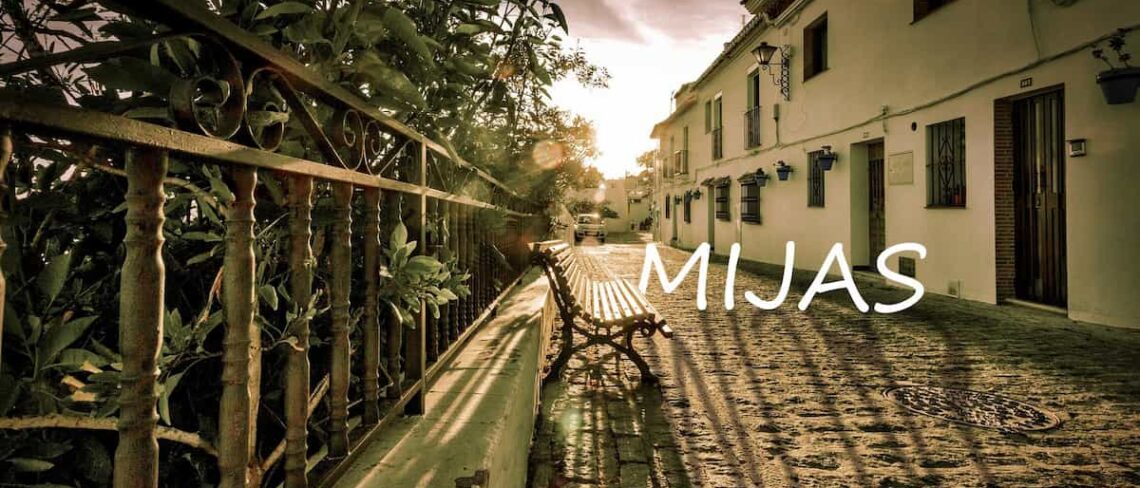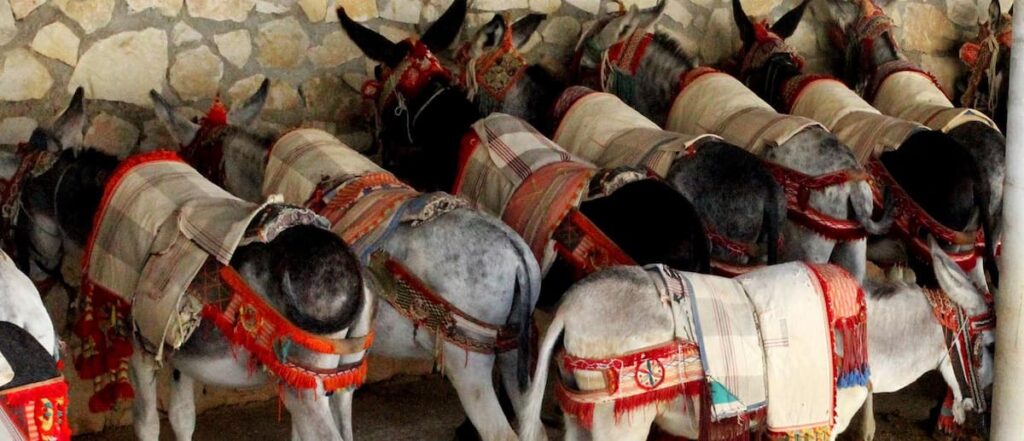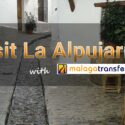The beautiful white village of Mijas is outstanding for many reasons. Located a few kilometres from the coast of Fuengirola, about 400 meters above sea level in the southern slopes of Sierra de Mijas, this municipality is one of the most popular White Villages on the Costa del Sol, with 33% foreign population.
Getting to know Mijas Pueblo
This popularity is partly due to its proximity to the most known coastal cities which facilitates a day trip to enjoy the beautiful streets and squares of this typical village whose old town retains the layout of Arab origin and where you can enjoy beautiful views of the coast and the mountains.
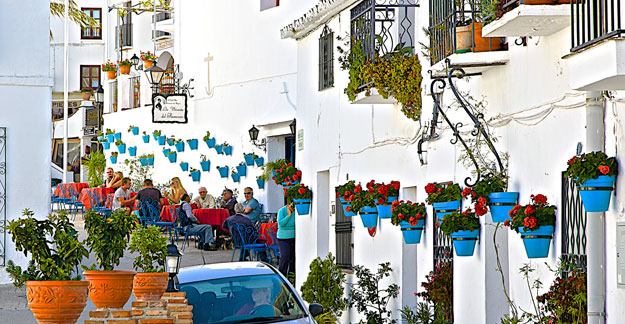
History
Under the Sierra de Mijas mountainside lies this ancient municipality. Mijas has been able to adapt and absorb part of the cultures that have settled in its territory; from the first inhabitants of the Upper Palaeolithic, to the Phoenicians and the Roman Empire; all have contributed to build a legacy that tells a beautiful story for those who want to listen.
After the fall of the Roman Empire there was a great commercial collapse and the migration of a large part of the population to the mountains. The Arabs took advantage of the weakness of the moment and ended up conquering the whole territory, after which there was a great cultural and economic growth. Agriculture was the main means of subsistence in Mijas; its exquisite figs were exported to the farthest corners of the world, as far as India according to testimonies of the time.
After the Catholic conquest, Mijas extended as far as the Sohail Castle in Fuengirola, but the situation was not stable. Again there was a significant depopulation due to the incursions of African pirates; this constant fear of being invaded and plundered led to the construction of many of the watchtowers which are still standing and which we will tell you about so that you can visit them.
One of the first monuments to be built after the new era is the Church of the Immaculate Conception, completed in 1631 and built on the site of a former mosque. We will talk about it later, so that you can visit it. (Map: https://goo.gl/maps/7KpHq3xcEwnh5Si1A)
Moving into the 21st century
In 1841, after the definitive separation from Fuengirola, the economy of Mijas was still partly dependent on agriculture. They now also had livestock farming and continued to use the old Arab mills until the middle of the 20th century. The arrival of tourism from 1950 onwards would bring about a radical change in Mijas’ lifestyle and growth.
From having an average of 250 inhabitants after the Catholic conquest, and maintaining a timid growth throughout the centuries, from 1960 onwards Mijas grew exponentially. Nowadays there are already 80630 inhabitants living in this beautiful municipality on the Costa del Sol.
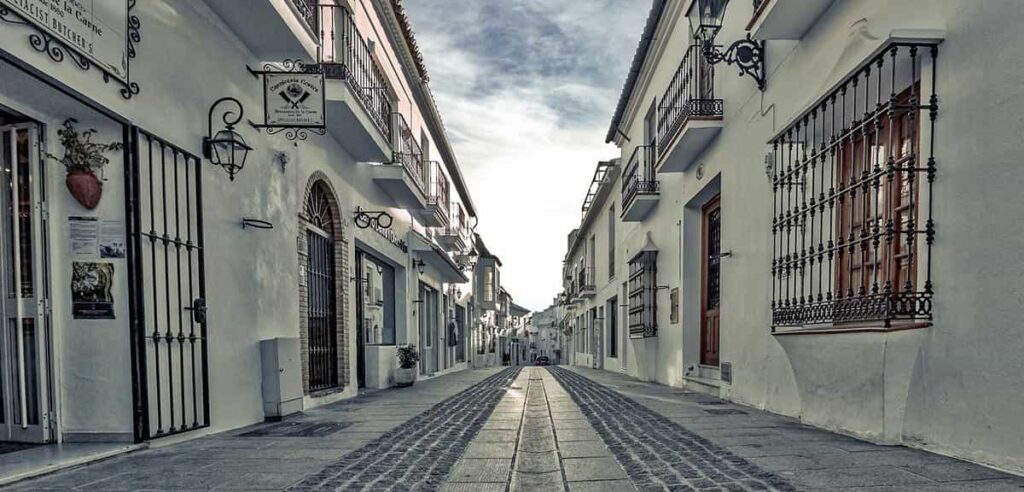
Time moves inexorably forward, but Mijas has survived its course.
Places to visit
The following places and monuments are worth a visit along a pleasant walk.
Hermitages
The hermitages of Mijas were built next to roads leading to other towns. Nowadays, due to growth, these locations have been swallowed up by the municipality itself.
Ermita de la Virgen de la Peña
Just a few metres from the central square is the Ermita de la Virgen de la Peña, the patron saint of Mijas, which was carved out of the rock in the 17th century. It is located where the old road leading to Fuengirola used to be.
https://goo.gl/maps/s45PEnkLTacVHnwNA
Ermita de Nuestra Señora de los Remedios
This hermitage can be found on what was the old road to Coín, today the Santa Ana neighbourhood. It was built during the 17th century.
https://goo.gl/maps/U9sQayefyDghvib49
Ermita de San Sebastián
This hermitage dates back to the beginning of the 17th century and is located on what used to be the road to Malaga. It has undergone alterations over the years, and the clock on its façade dates from 1902.
https://goo.gl/maps/jgsSeMTEWexVFVE97
Ermita de San Antón
Built at the end of the 18th century next to the old road leading to Malaga, somewhat further away from the town centre than the previous one. Every year the Romería de San Antón is held here on 17th January.
https://goo.gl/maps/C6bFzKgcao3cYuow9
Ermita del Puerto
Built with alms from the faithful at the end of the 18th century on the old road to Malaga.
https://goo.gl/maps/pMijkjay1wrc16X6A
Ermita del Calvario
The exact date of construction is unknown, but it must have been built after 1773. It is located at the foot of the sierra and can be reached by following a path through the pine woods. It is only open on Fridays during Easter Lent.
https://goo.gl/maps/A4jBgkm9iA6qn6xL9
Church of the Immaculate Conception
Also of great historical value is the Mudejar style church Inmaculada Concepción, originally an Arab mosque from the 9th century and reformed next to the remains of a castle into a Christian temple at the beginning of the 17th century.
It has undergone other alterations over the years, the last one in 1992, in which some previously hidden paintings were found.
Location: https://goo.gl/maps/g5RR5kifW7yeW74Z7
Old Moorish Wall and Castle
One of the most attractive places is undoubtedly the Old Moorish Wall of Mijas. It can be visited free of charge at any time of the day and offers spectacular views of the Costa del Sol from the viewpoint.
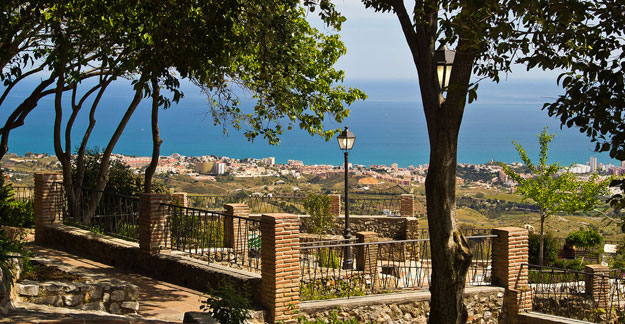
This wall is what remains of an ancient Moorish fortress. Although the Muslims were completely eradicated after the Christian conquest, their legacy is undoubtedly still present in the typical layout of its streets and white houses.
Botanical Route
In the area of the old Arab wall, a Botanical Route has recently been set up, a garden area with abundant flora and some fountains where you can enjoy a rest in the shade. In addition to the abundant flora in bloom all year round you will be able to see animals in freedom and, as well as a 15-metre high stone waterfall that is illuminated at night.
Location: https://goo.gl/maps/km6ULMJ78KJpP2tCA
Bullring
Continuing along the walk you will come to a very particular bullring with its architectural shape and oval-shaped bullring. It is the third oldest bullring in Spain, dating back to 1900, making it another recommended visit.
Museums
There are several museums in the village, among them the curious museum of miniatures called El Carromato de Max and the Museo Histórico-etnológico.
Carromato de Max
This curious museum was founded in 1972 by Juan Elegido Millán, also known as Professor Max. It exhibits collections that he made around the world during his constant travels.
Among the most curious pieces are the head of a white man reduced by the Jivaros and artistic reproductions in impossible places, such as a toothpick, a grain of rice or the head of a pin. Many will be amazed to see dressed fleas, although to see them you will have to use the magnifying glass that accompanies them.
- Location: https://g.page/CarromatodeMijas?share
- Opening time: 10:00 am –2:00 pm and 5:00 pm – 9:00pm Monday to Sunday during the summer, and until 6 pm in winter.
- Note: Nowadays it is also called Carromato de Mijas.
Historical-ethnological museum
One of the essential visits in Mijas if you want to get to know its past is its museum, where the old town hall was located. In this museum you will find old farming equipment, as well as recreations of Andalusian rooms from the beginning of the 20th century.
The entrance fee is only 1€.
Opening times
From 11 to 30 June | (Monday to Sunday, 10 am to 2 pm – 4 pm to 8 pm)
From 1 July to 31 August | (From Monday to Sunday, from 10 am to 2 pm and from 5 pm to 9 pm)
More information on the official website.
Location: https://goo.gl/maps/yqwx9hSaBFe8GfkB8
Burro-Taxis
The so-called donkey taxis were born out of the tourist boom of the 1960s. The workers, on their way home on their donkeys, were requested by tourists who asked to have their photos taken with them. They soon realised that they earned a lot of money in tips.
Donkey taxis are offered as a tourist means of transport, especially for children, for a price of between €15 and €20.
Location: https://goo.gl/maps/vzJBuvf7GwmzpZPMA
Mijas Activities
Since strolling whets the appetite you will love knowing that Mijas has a large number of restaurants and bars serving local and international cuisine.
Because of its particularity we especially mention the Wine Museum, a restored nineteenth century house, where visitors can taste and buy wines with designation of origin Malaga and have some tapas or try a menu and wines in the restaurant.
Mayan Monkey Mijas is the world’s smallest Chocolate Factory. Ideal for families with children where you can visit the factory and make your own chocolate, plus of course buy a vast assortment of fine chocolates.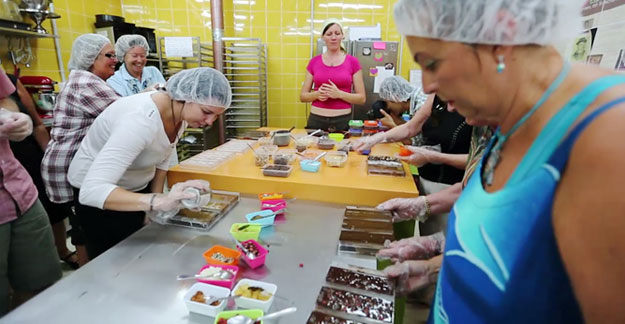
Finally, the mountain slopes of Sierra de Mijas invite for long walks and hiking in nature, surrounded by pine forests and Mediterranean flora. There are several routes of different difficulty level.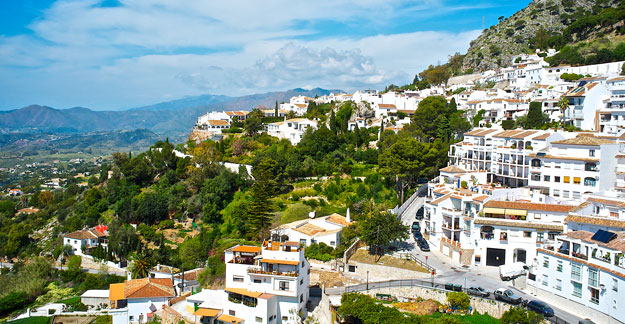
Once you have decided which places you would like to visit, you can book your transfer from Malaga airport to Mijas.
